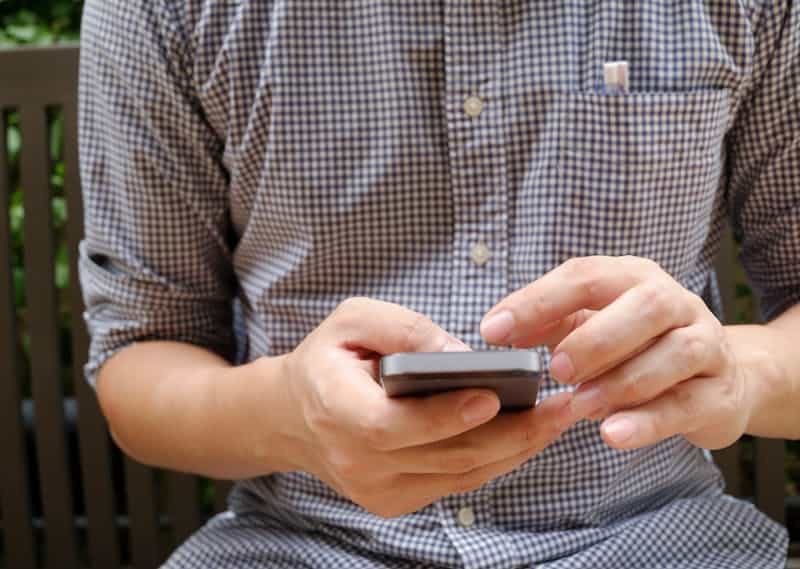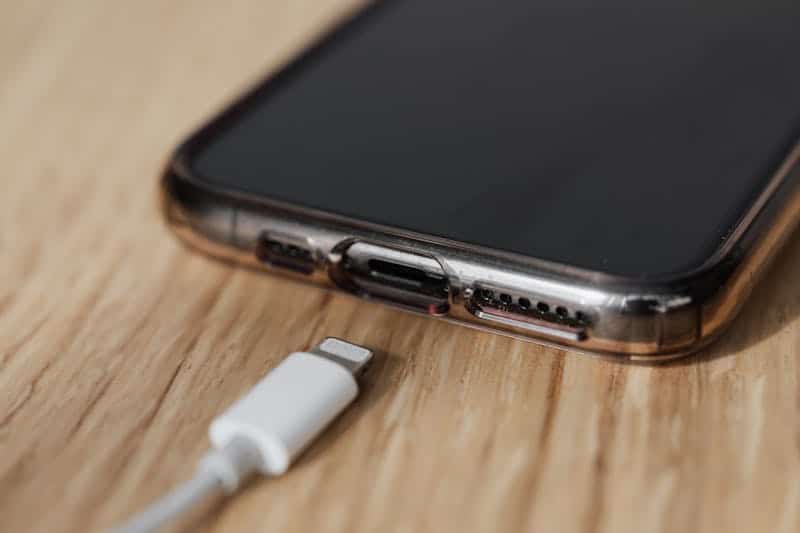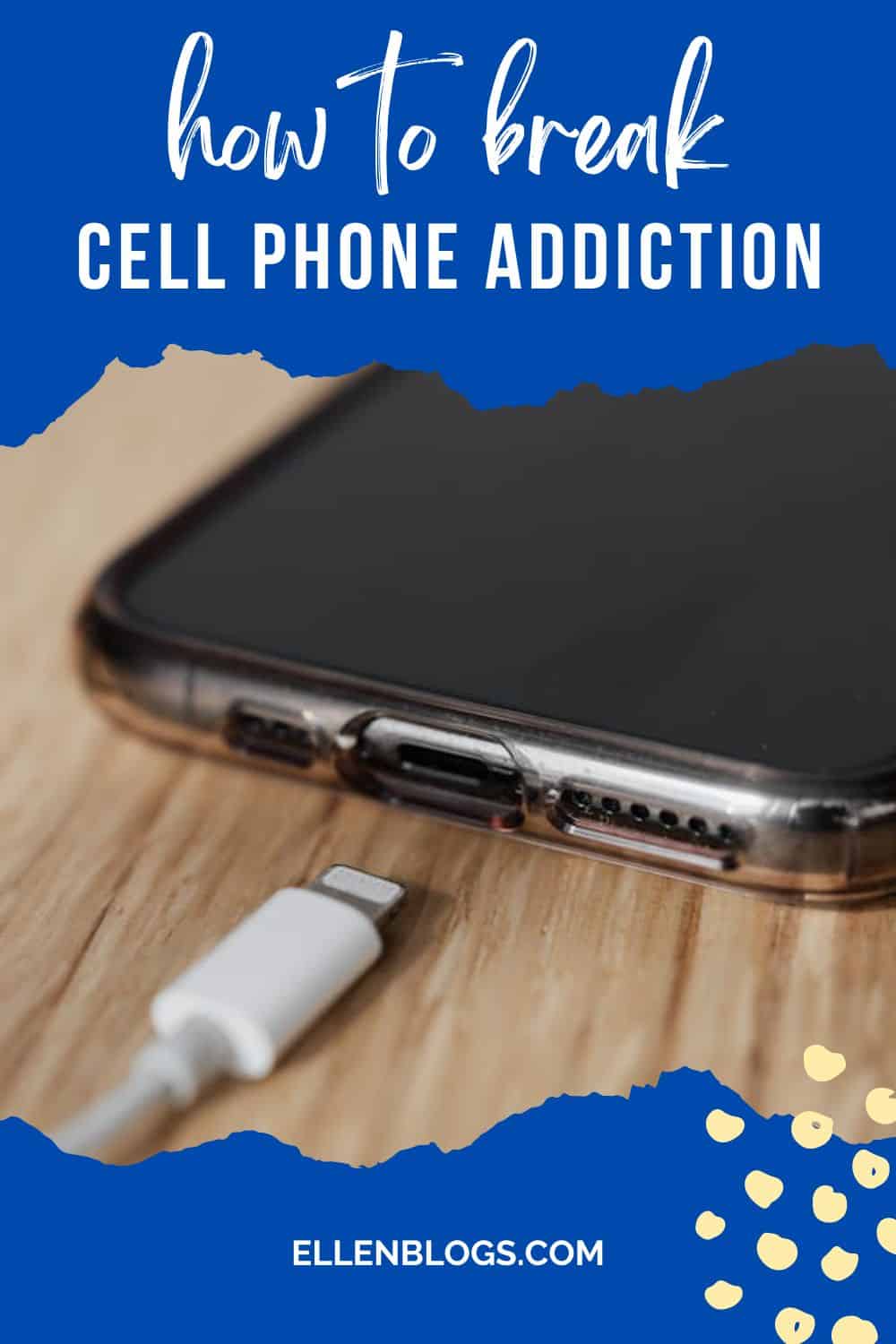Last Updated on May 26, 2024 by Ellen
Wondering how to break cell phone addiction? Check out these tips to cut back on cell phone usage as a small business owner.
Posts may be sponsored. This post contains affiliate links, which means I will make a commission at no extra cost to you should you click through and make a purchase. As an Amazon Associate I earn from qualifying purchases.
How to Break Cell Phone Addiction
Cell phones are indispensable tools in today’s digital age, offering unparalleled connectivity and convenience. However, the very features that make them powerful also contribute to a growing issue: cell phone addiction.
For small business owners, the line between essential work usage and compulsive behavior can blur quickly, leading to decreased productivity and increased stress levels. This guide aims to provide actionable insights on breaking cell phone addiction while maintaining the availability your business demands.
Why Am I So Addicted to My Cell Phone?
Understanding the root of cell phone addiction is the first step toward breaking it. Here are some common reasons:
Instant Gratification: Notifications and social media likes trigger dopamine release, creating a cycle of instant rewards.
Fear of Missing Out (FOMO): The constant need to stay updated with news, trends, and social interactions can make phones hard to put down.
Work Demands: As a small business owner, your phone is a primary tool for communication, marketing, and operations, making it difficult to disconnect.
How to Cut Down on Phone Usage
Reducing your phone usage doesn’t mean you have to sacrifice efficiency or customer service. Here are some practical strategies:
1. Schedule “Phone-Free” Times
Designate specific times during the day when you will not use your phone. This could be during meals, family time, or dedicated work hours. Inform your team and clients about your availability windows to set expectations.
2. Use Digital Wellbeing Features
Most smartphones come equipped with tools designed to help you manage your screen time. Utilize features like app timers, focus modes, and screen-time reports to monitor and control your usage.
3. Disable Non-Essential Notifications
Turn off notifications for apps that do not require immediate attention. This reduces distractions and helps you focus on more important tasks. Consider setting specific times to check emails and social media.
4. Adopt Alternative Communication Channels
Encourage your team to use alternative communication channels like email, project management tools (e.g., Trello, Slack), or even face-to-face meetings. This can help minimize the dependence on your phone for business-related interactions.
5. Create a Charging Station
Establish a designated area for charging your phone that is away from your workspace and bedroom. This can help reduce the temptation to constantly check your device.
6. Practice Mindfulness
Mindfulness techniques, such as meditation and deep-breathing exercises, can help you become more aware of your phone usage patterns and make conscious decisions to reduce it.
Cell Phone Addiction Symptoms
Recognizing the symptoms of cell phone addiction can help you take proactive steps. Common signs include:
Feeling anxious or irritable when your phone is not nearby
Frequently checking your phone, even when it hasn’t rung or vibrated
Losing track of time while using your phone
Neglecting personal or professional responsibilities due to phone use
Balancing Need Versus Want as a Business Owner
As a small business owner, it’s crucial to distinguish between necessary phone usage and compulsive behavior. Here are some tips to strike a balance when you work from home:
Set Clear Boundaries: Define what constitutes essential phone usage for your business. This could include responding to client inquiries, managing social media, or coordinating with your team.
Prioritize Tasks: Focus on high-priority tasks during your peak productivity hours and use your phone only for essential activities.
Delegate Responsibilities: If possible, delegate certain tasks to your team to reduce your phone dependency. This can also empower your employees and improve overall efficiency.
7 Ways to Break Cell Phone Usage but Still Be Available to Your Customers
Set Up Auto-Responders: Use auto-responders for emails and messages to inform clients of your availability and expected response times.
Schedule Regular Check-Ins: Allocate specific times during the day to check and respond to messages, ensuring you remain available without being constantly tethered to your phone.
Use Call Forwarding: Forward business calls to a landline or a designated team member during your “phone-free” times.
Leverage Virtual Assistants: Virtual assistants can handle routine tasks and customer inquiries, allowing you to focus on more critical activities.
Implement Client Portals: Create dedicated client portals where customers can access information, submit requests, and track progress without needing direct phone communication.
Promote Self-Service Options: Offer self-service options on your website or app, enabling customers to find answers and complete transactions independently.
Communicate Availability Clearly: Clearly communicate your availability to clients and team members through your email signature, website, and social media profiles.
Conclusion
Breaking cell phone addiction is a challenging but essential step for small business owners striving for a balanced and productive life. By understanding the root causes, recognizing the symptoms, and implementing practical strategies, you can take control of your phone usage without compromising your business operations.
Remember, the goal is not to eliminate phone use entirely but to create a healthier relationship with your device. With discipline and mindful practices, you can achieve a balanced lifestyle that enhances both your personal well-being and your business’s success.

Ellen is a serial entrepreneur who owns 9 profitable blogs, two printable stores, an online vintage jewelry business, and a variety of other work at home endeavors. She shares tips for working at home successfully.




